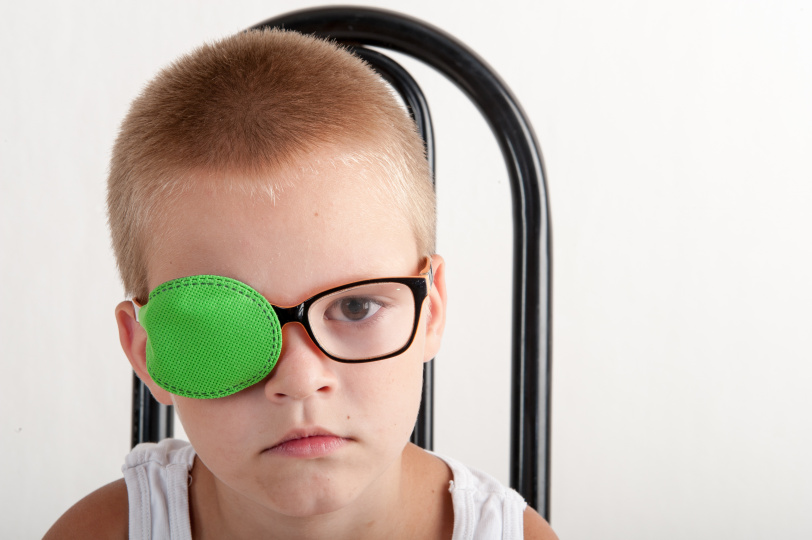Wow Vision Therapy Blog
Beyond patching…with new advancements in treatment for Lazy Eye, why are patients told to wear an eye patch?

When it comes to your child’s health care, what parent would prefer their child’s doctor to prescribe an outdated treatment, that provides limited results and many negative side effects? Most assuredly, all parents would say “No” if positioned this way. Yet this is exactly the case for too many children with the most common form of developmental vision loss, Amblyopia (Lazy Eye). Parents are often told that their child’s primary treatment is an eye patch.
Case in point, here is a true example of an 8-year-old boy with amblyopia. He is a patient of ours whose parents were frustrated with the patching approach of treatment for their child and were looking for better solutions for his amblyopia. We received a copy of his eye doctor’s medical record which said the following:
Diagnosis: Refractive Amblyopia
(Patient’s doctor’s note) “I had a long discussion about realization of vision always being sub-optimal in his right eye and vanishing opportunity to enhance vision. Discussed decreased depth perception and its implications for employment/military etc. Mom is doing the best she can and acknowledges all of the points. Discussed vision is down today, restart patching 4-6 hours a day and wearing glasses full time.”
So the big question is, why do so many doctors who diagnose their patients with amblyopia, prescribed a treatment (patching) that has been in existence for over 300 years, even when new advanced treatment is available?
One explanation is, like many situations involving the change in healthcare, doctors may get stuck with methods they were taught unless new information is made available in published medical journals and based on research.
Therefore, to help ophthalmologists and optometrists have a better understanding for what is the current treatment for patients with amblyopia, now published in the latest edition (August 2018) of Advances in Ophthalmology and Optometry: Vision Therapy and Virtual Reality Applications. This chapter was written as a collaboration among Drs. Alyssa Bartolini, Brian Dornbos, Tuan Tran and myself to provide an extensive review of vision therapy including virtual reality applications for patients with binocular vision problems.

No longer should a child have to endure patching, with its many problems, because now those patients with amblyopia can obtain better results including developing depth perception, better visual tracking, reading fluency, eye-hand coordination and visual perceptual abilities in addition to improved visual acuity…plus treatment is not restricted by age.
Patient’s should now be advised by their eye doctor that advancements in vision therapy, including virtual reality applications, are helping to provide better results for patients way beyond patching.
Dan L. Fortenbacher, O.D., FCOVD
